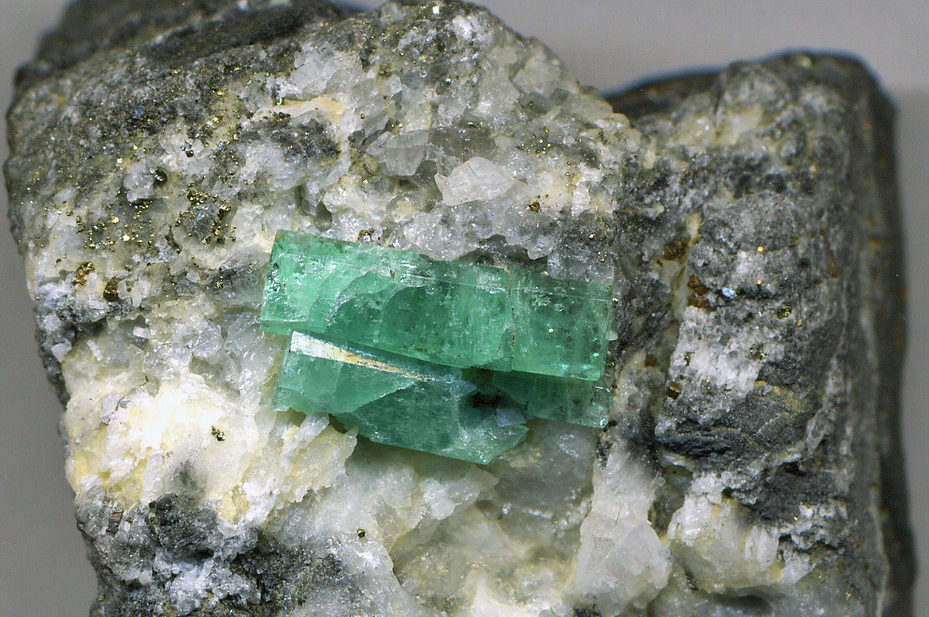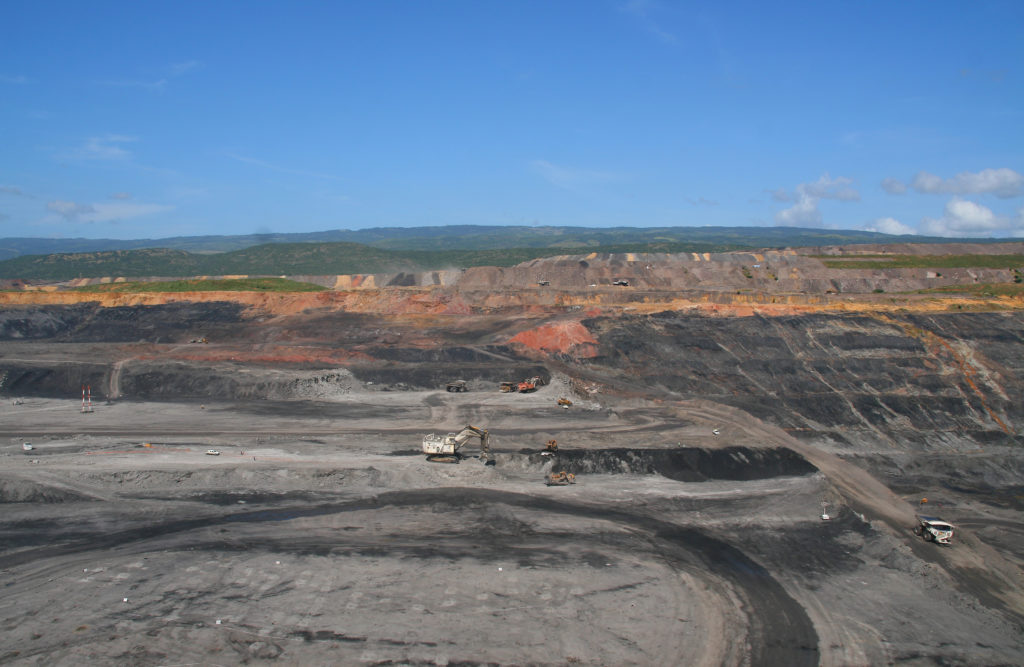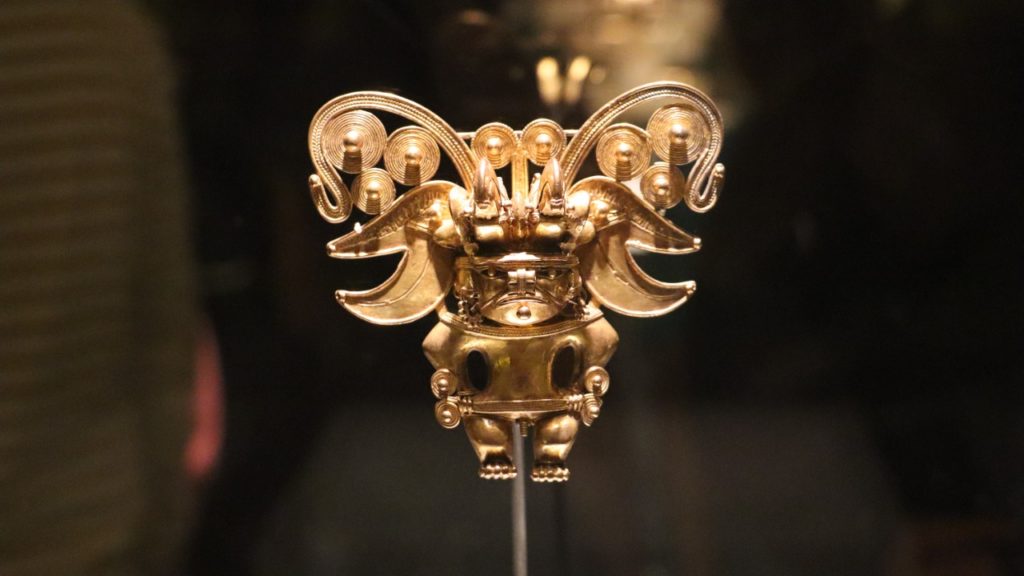
The Colombian mining industry is one of the most important in Latin America. Known for its abundant natural resources and rich soil, Colombia also has incredible subsoil potential. In 2022, the mining sector accounted for 3 percent of Colombia’s GDP, and the country ranked 14th worldwide for investments in the mining sector.
The mining industry is indeed a key component of both the national and local economies, as it generates approximately 160,000 direct jobs and 750,000 indirect jobs nationwide. In some regions, like the departments of La Guajira and Cesar, mining represents as much as 56 and 44 percent of the local GDP.
The financial flows generated by the mining industry in Colombia are also very important. In 2023, the sector generated around 5 million dollars (19 billion COP) in royalties and attracted approximately US$3.29 billion in foreign investments, accounting for around 19 percent of the total foreign investment in the country.
Last year, mining also topped Colombia’s exports, with export values reaching $20.38 billion, according to the Colombian Mining Association. Beyond these figures, the Colombian mining industry offers a dynamic and evolving panorama. In this article, we will explore its characteristics and potential, as well as the various agencies involved.
Colombia’s major mining resources
Coal is the most significant mining resource in Colombia, accounting for 64 percent of the country’s mining GDP. As of 2023, Colombia is the largest producer in Latin America and ranks as the fifth-largest global exporter, with an annual output of approximately 51 million tons. The production is primarily thermal coal (90 percent), with a smaller portion being metallurgical (10 percent). Coal mining is a crucial sector of the economy, representing about one percent of the national GDP and generating around 130,000 jobs, according to the Ministry of Mines and Energy.
The departments of Cesar and La Guajira stand out as key production centers, contributing about 70 and 20 percent of the national output, respectively. Cerrejon mine, in La Guajira, is the biggest mine in Colombia and one of the biggest coal mines in the world. With substantial reserves, the continuation of Colombian coal production is projected for at least the next 20 years, as stated by the National Mining Agency (ANM)
Alongside coal, Colombia also boasts significant metal production, notably gold, which is a major mining resource in the country. It accounts for approximately 1.5 percent of global production, with about 70 tons exported for an estimated value of around 3 billion US dollars, which accounts for 5.2 percent of the total value of Colombian exports, according to the ANM. The gold industry is primarily concentrated in the Antioquia department, home to the three biggest gold mining projects in the country, namely the mines of Buritica, Segovia, and Cisneros. Notable production also occurs in the Cauca, Choco, and Bolivar departments.
Nickel stands as the other major metal exploited in Colombia. The country is the leading producer in South America, with a production estimated at around 41,000 tons in 2022. The center of Colombian nickel production is the Cerro Matoso mine in the department of Cordoba, which is the largest in Latin America and one of the largest worldwide. Colombia ranks as the tenth-largest nickel producer and holds the tenth-largest nickel reserves in the world.
To complete this overview, it is crucial to mention the precious stones. Colombia has historically been the world’s leading provider of emeralds. Although recently surpassed by Zambia, Colombia remains the foremost producer of high-quality emeralds, renowned globally for their incredible quality. In 2022, Colombia was the leading emerald exporter in the world, with an export value of US$84.85 million. The country’s production is concentrated in the Cundinamarca and Boyaca departments, particularly through the historic Muzo mine, which has been exploited since the 16th century, and the mines of Cunas, Coscuez, and Chivor.

Colombia’s mining policy
The mining potential of Colombia remains largely underexploited. Indeed, mining currently covers only 2.9 percent of the national territory. Despite its potential and importance in Colombia’s economy, the mining sector is currently heavily influenced by the country’s environmental agenda, its commitment to the path of energy transition and climate change.
In 2018, the country ratified the Paris Agreement at the United Nations Framework Convention on Climate Change, aiming to reduce its emissions by 20 percent by 2030. This commitment was strengthened in 2020 through the Nationally Determined Contributions, promising to reduce emissions by 50 percent by 2030 and achieve carbon neutrality by 2050.
This commitment has been reinforced under the leadership of Gustavo Petro, who has officially made energy transition, climate change mitigation, and environmental protection top priorities of his administration. Petro’s policy towards mining is dubbed “Mining for life,” aiming to transition from a purely extractive model to an industrialized model, with the processing of minerals. In September 2022, during the National Mining Congress, he stated that “mining exploration and its focus should have a different objective….see if there is lithium, more copper, cobalt, coltan, and manganese. If not, other decisions should be made. Mining exploration must change its approach.”
Indeed, the Colombian president sees the mining industry as a tool to achieve energy transition, since renewable energies rely heavily on the mining industry. Wind turbines, solar panels, and electric vehicle batteries all require minerals, particularly critical minerals like copper, manganese, nickel, aluminum, zinc, or chromium. On the other hand, Gustavo Petro has taken a radical position on hydrocarbon and carbon exploitation, as he stated during COP28 that Colombia would not sign new carbon exploitation contracts.

Energy transition and critical minerals
Critical minerals are now at the heart of Colombia’s mining ambitions. In November 2023, the ANM updated its list of strategic minerals. According to its definition, a strategic mineral is one that is available in the country and meets current or future needs in terms of developments (industrialization, construction of infrastructure, and agricultural development) required for a gradual transition towards sources of clean energy generation. These strategic minerals notably include copper, nickel, platinum, metallurgical coal, gold, phosphate (critical for fertilizer production), and emeralds.
In this sense, the government adopted a controversial decree in February 2024,. Signed by the ministers of Environment and Mines & Energy, the decree grants environmental authorities the power to halt mining procedures or suspend ongoing projects. This decree was seriously contested by leaders of the Colombian mining industry.
“It is a decree that overrides legal and constitutional norms and can be used arbitrarily and subjectively to hinder the development of new mining activities,” declared the president of the Colombian Mining Association. Indeed, the decree allows the government and state authorities to suspend mining projects by enabling the declaration of areas reserved for natural resources. The mining sector fears that the decree could favor mining projects that are compatible with the strategic vision of the Petro administration, at the expense of others.
An untapped mining potential
Considering the strategic directions of the Petro administration, ColombiaOne decided to consult Luis Hernan Sanchez Arredondo, a professor at the National University of Colombia (Universidad Nacional de Colombia), to learn more about Colombia’s mining potential in terms of strategic minerals.
Professor Sanchez Arredondo particularly highlighted the country’s significant potential for copper exploitation. In 2022, Colombia produced approximately 6,900 tons of copper, notably from its El Roble mine in the Choco department. This modest production contrasts with the immense reserves the country possesses. According to a study by the UPME, Colombia has estimated reserves of between 7.7 and 9.7 million tons of copper.
Although these deposits are small compared to the Chilean and Peruvian giants, which have reserves of 190 and 120 million tons respectively, Colombia still aims to exploit this potential. Notable deposits are found at the Quebradona site in the Antioquia department, with an estimated 1.3 million tons, and at San Matias in the Cordoba department, with about half a million tons.
Regarding the other strategy, Professor Sanchez Arredondo indicated that “we [Colombia] must explore them because in most cases Colombia has the potential to find deposits to at least cover local needs.” In addition to these critical minerals, Professor Sanchez Arredondo also underlined an untapped potential regarding Rare Earths. Two studies from the National University of Colombia revealed the existence of high concentrations of Rare Earths in carbon deposits in the Boyaca Department, as well as the potential existence of 4.9 million tons of total rare earth oxides in the Antioquia Department.

Foreign investments
Because of this significant potential, the mining industry in Colombia is significantly influenced by foreign investors and foreign companies. Indeed, the mining sector is among the most attractive sectors for foreign investment in the country. Currently, the most active foreign investors in the sector come from the United States, Canada, the United Arab Emirates, and China.
Major mining groups operating in the country include the global company AngloGold Ashanti Limited, headquartered in South Africa, which runs Colombia’s biggest active copper mine. Additionally, global giants such as Glencore, Xstrata, and Anglo American PLC operate the vast coal deposits in the Caribbean region.
In this regard, China is becoming an increasingly prominent player, as the Chinese market is driving global mining production, including that of Colombia. Over the past two decades, Beijing invested over US$2 billion in the Colombian mining and energy sector. For instance, in 2021, the entirety of Colombian copper production was exported to China, according to the ANM. Zijin Mining, a leading Chinese mining company specializing in gold, copper, and zinc, is currently operating the Buriticá mine in the Antioquia department, which is the country’s largest gold mine.
The challenge of artisanal mining
In December 2023, the “Ecominerales” law was enacted, officially promoting economic development and the formalization of the mining sector to transition from an extractive to a productive model. The primary aim of this law is the creation of a public company to oversee the mining sector and promote industrial, agricultural, and infrastructure development.
Andres Camacho, the Minister of Mines and Energy, emphasized that the project would “guarantee the formalization of mining, ensure a real fight against illegality, and secure legal markets and circuits so that mining can develop in the territories with responsibility, sustainability, and the purpose of generating wealth for the country.”
Artisanal and illegal mining is indeed a significant aspect of the mining sector in Colombia. To understand this complex phenomenon and complete our panorama, ColombiaOne reached out to Giovanni Franco Sepulveda, former Vice Minister of Mines and Energy and professor at the National University of Colombia, who granted us an interview.
Artisanal mining is an almost inextricable phenomenon within the mining industry. How is this phenomenon characterized in Colombia? What is the state’s position in this regard?
“Mining in Colombia is regulated by Law 685 of 2001, which notably defines the types of mining. Ancestral or artisanal mining is permitted under certain conditions and restrictions. It must be completely manual, without the use of mechanical and technological means, and with limited monthly commercialization; for example, in the case of gold, less than 35 grams per month (approximately one ounce).
In this sense, gold is the most sought-after metal by artisanal miners. In Colombia, it is estimated that only 15-20 percent of gold production is legal, the rest being the result of informal mining. This high level of informality is primarily due to external factors, especially the price of gold in international markets.
We are talking about a price that has increased by 80 percent in five years, from approximately $1,270 per ounce in 2019 to about $2,371 today, notably due to the global geopolitical context. This increase in prices has led to an unprecedented rise in mineral exploitation in Colombia.”
Apart from gold, what are the most sought-after and coveted minerals by artisanal miners? Why?
“In terms of artisanal exploitation, base stone, which is crucial for the construction of infrastructure such as bridges, homes, etc., carries high levels of informality. Emeralds are also highly sought after, with their exploitation concentrated in a few hands, as well as coal, particularly in Cundinamarca and Boyaca departments.”
Would you say that artisanal mining complements or damages and diminishes the potential of the mining industry?
“Artisanal mining presents unsuitable social and environmental conditions, leaving liabilities and damages that the state itself must later manage. There are independent workers who have traditionally carried out exploitation. In recent years, artisanal mining has been significantly growing, following the trends of international market prices.
Due to these high prices, notably for gold, illegal and armed groups have entered the mining business to finance their activities. A very specific case is the mine of Buritica, in the Antioquia department, where the Chinese operator Zijin Continental gold is being threatened by attacks and invasion from illegal exploiters linked to the Gulf Clan.”
Can we estimate artisanal mining, financial movements, and the number of people involved?
“It is very difficult to estimate artisanal mining. It is a highly insecure and random activity. The volumes found and exploited by miners can vary significantly. As a result, a large part of the activity remains undeclared, since, in the case of gold, beyond the monthly ounce produced, one becomes a small mining operator and consequently, has to pay taxes.”
“The country lacks up-to-date data on the subject. The last mining census dates back to 2011. Today, it is impossible to determine how many artisanal miners operate in the country. One thing is certain, their numbers have considerably increased over the last few years, notably due to the rise in the price of gold. During my tenure as Deputy Minister of Mines a year ago, we attempted to update the mining census, but were particularly hindered by its high cost, 110 billion COP (about US$29 million).”
See all the latest news from Colombia and the world at ColombiaOne.com. Contact our newsroom to report an update or send your story, photos and videos. Follow Colombia One on Google News, Facebook, Instagram, and subscribe here to our newsletter.

